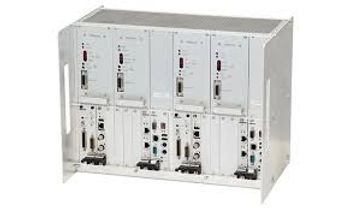
- March/April 2023
- Volume 64
- Issue 2
PowerGen 2023 Show Report
The dominant themes at the show included hydrogen, the evolution of power plant, and CHP.
PowerGen International, held Feb. 21-23, returned to Orlando, Florida, for 2023. The show appears to be regaining its audience again after a long absence due to the pandemic.
Clarion’s Vice President of Content David Wagman kicked things off by emphasizing the theme of the conference: Destination 2050—reaching net zero carbon emissions by 2050 via industry innovation.
KEYNOTE
Jan Aspuru, the COO of Orlando Utilities Commission, discussed its microgrid lab and the development of a hydrogen energy storage system. He also spoke on the company’s Osceola generating station, which utilizes GE gas turbines. He noted how intermittent solar is a renewable source for the state of Florida, and that natural gas is seen as a more persistent option. Traditional power needs to work in tandem with newer solutions to retain grid reliability.
Alex Glenn, CEO of Duke Energy Florida and Midwest, detailed different areas that impact the plans to reach net zero. These include local and federal government partnerships, maintaining equipment performance, addressing concerns of stakeholders, and supply chain constraints.
“Coal will represent less than 5% of power generation in 2030,” he said. “A diverse generation mix is key to customers.”
DIRECT AIR CAPTURE
An early presentation provided an overview of direct air capture (DAC) technology and the status of developments and deployments to date. It included a discussion on potential applications for coupling DAC technology with existing power assets to lower the carbon footprint.
Eric Ping, Vice President, Technology at Global Thermostat, explained his company’s DAC system. Ambient air comes in from the sides and is heated to 200°F. Then the CO2 is extracted at a rate of 400 ppm. It uses amine chemistry in solid form instead of the usual solvent form.
“Direct contact steam stripping delivers latent heat into the system,” said Ping. “Multibed adsorption removes significant plant capital expense.”
He added that front-end engineering design (FEED) studies are ongoing for sites in Texas, Illinois, and Alabama to identify risks, establish a plan of execution, and develop a budget before projects are approved for funding.
Kevin Lauzze, Vice President & Project Director at Sargent & Lundy, added that a ring-shaped DAC module with 10 segments was the best design. Computational fluid dynamics (CFD) was used to confirm the viability of that size and design and to ensure there were no fatal flaws in the air flow. A fan 15 feet in diameter turned out to be optimal. When larger fans were modeled, the structural design aspects scaled poorly. Thus, little or no economies of scale were realized in process equipment sizing.
CHP MODERNIZATION
DTE Energy’s Dearborn Central Energy Plant (CEP) generates electricity and distributes chilled water, hot water, and steam to buildings at the Ford Dearborn Research and Engineering Campus (REC). The CEP consists of a combined heat and power (CHP) plant and a chilled/hot water plant for combined power and steam generation. The energy produced from the CHP is sent to DTE Electric. Steam, hot water, and chilled water are sent to the REC. The CHP plant can generate 34 MW and produce up to 225 kilo-pounds per hour (KPPH) of 200 PSIG saturated steam. It consists of two 14.5 MW Solar Titan 130 gas turbines, a 5 MW condensing steam turbine from Siemens Energy, and two Rentech Heat Recovery Steam Generators (HRSGs) (370,000 lb/hr).
DTE recently installed a hybrid analytics solution that combines machine learning and advanced pattern recognition (APR) software with a digital twin to monitor and improve the performance and reliability of the plant.
Kevin Siess, Facility Manager at DTE Energy, said the CEP opened on the first day of 2020. COVID-19-inspired lockdowns provided the impetus to innovate in plant monitoring.
“A single person looks after the entire 34 MW, 87,000 square foot facility 76% of the time,” said Siess.
Teething troubles were inevitable. The first year saw nine unit trips, but that fell to five in year two and two in year three. The number of hours also dropped drastically—from 50 hours of unplanned downtime in the first year to four hours in the third year. Siess said 12,000 data points are analyzed from front-end plant controls, sensors in most components and systems, computerized maintenance management systems (CMMS), and MapX software for advanced pattern management (APM) and modeling.
“Our plant operators are also our maintenance staff who can monitor the plant and overall control systems while they are doing their rounds,” said Siess.
COAL-TO-GAS CONVERSIONS
Coal-to-gas conversions were covered in several sessions during the show. While some dream of transitioning to renewables in a matter of a few years, reality is beginning to set in. By moving coal resources to natural gas, major emissions reductions can be achieved without causing grid disruption or causing rolling blackouts as has been the case in California of late.
Jonas Hackmann, President of Fossil Power Systems, talked about the many technical and project execution challenges to be considered when planning to convert a tangential fired furnace from coal to natural gas. He gave a rundown of combustion air system modifications, fuel system designs, boiler modeling, and emissions reductions, as well as factors affecting equipment and retrofit cost, operation, maintenance, and performance. He made the point that coal-to-gas conversions can bring about emissions reductions of about 50% in CO2 and more than 60% on NOx.
Another session noted strong interest in 100% hydrogen firing or co-firing large utility-class coal, oil, and natural gas boilers to achieve decarbonization goals. While no singular template exists for all retrofits, the session laid out key fac-tors and potential modifications across a range of units, including both wall-fired and tangential fired boilers. What surprised some attendees was the fact that running hydrogen in boilers is nothing new.
“We have had a great many package boilers running nothing but hydrogen for decades,” said Denis Osowski, Development Director, Engineering Technology at Babcock & Wilcox.
He questioned whether the use of hydrogen in boilers made sound economic sense most of the time for the production of power and steam. In situations where there is a hydrogen hub operating and a coal boiler is sitting nearby, it may make sense. But overall, he said hydrogen is a super expensive fuel and the use of it may require expensive system and equipment modifications. It is technically feasible but often won’t make economic sense.
Osowski showed a chart of gaseous fuels and how impurities often present in hydrogen in very small amounts can make a huge difference in the fuel and how the gas moves through the pipes. Further problems mentioned include the need for bigger pipes and valves, safety features to prevent leakage and cope with hydrogen’s wider explosive limit, the need for more fuel nozzles to spread the flame better and improve combustion efficiency, and modifications to igniter systems and flame scanners.
DATA CENTER POWER
Rethinking data center power was the topic of a session toward the end of the program. Todd Forrest, Senior Project Development Engineer at HDR, briefed that there are already more than 4 GW of data centers in the U.S. in primary and secondary markets, and the market is experiencing 11% year-over-year growth. He doesn’t anticipate that growth rate slowing down any time soon.
The typical 100 MW data center includes a dedicated substation, often has two independent utility feeds for redundancy, and contains a lot of equipment to shift voltages down before feeding current to the equipment.Most of the time, these facilities use diesel generators for backup power.
But more data centers are looking at CHP to enable them to be fully in control of power supply, or to supplement grid power. In some cases, the CHP facility harnesses excess heat to create chilled water for data center consumption, sells excess power back to the grid, and has the option of using that power to keep the data center running in the event of a natural disaster or grid failure.
EVOLUTION OF THE POWER PLANT
Carbon capture, utilization, and storage (CCUS) is an important technology for decarbonization goals. A panel of experts focused on point source carbon capture, geological storage, pipeline transportation, monitoring, costs, and other relevant areas. Richard Esposito of Southern Company emphasized the importance of bringing projects in on time and reviewed the basics of CCUS. Jose Figueroa of the National Energy Technology Laboratory (NETL) spoke on the need for an integrated carbon management approach and the importance of developing advanced technology quickly.
Mark McKoy, also of NETL, went over pipeline infrastructure development projections and the expansion of the industry.
“The U.S. Department of Energy (DOE) is working to implement further initiatives for infrastructure changes. This includes providing technical assistance and information for undertaking CCUS projects and arranging co-founding support for carbon storage facility pilot projects,” said McKoy.
Bob Slettehaugh of Kiewit spoke about the costs of CCUS as an emerging market and the importance of strong partnerships for all parties involved in its development.
AERODERIVATIVE GAS TURBINE UPGRADES
Sanjay Hingorani, Chief Engineer and Director, Customer Technical Support at Mitsubishi Power Aero, covered aeroderivative gas turbine upgrades. Specifically, for the fleet of FT8 and FT4000 series gas turbines. The presentation covered several areas where aeroderivative on-demand power technology is improving through product upgrades. Examples were FT8 wet compression, FT4000 performance improvements, digital data solutions and remote monitoring.
“Existing engines can implement wet-compression technology, i.e., water injection, which leads to a 12% power increase on an FT8 gas turbine,” he said.
He highlighted the capability of the company’s aeroderivative units to blend hydrogen and natural gas. Hingorani also addressed the topic of hydrogen as a gas turbine fuel option, and Mitsubishi Power Aero’s efforts in preparing for expected technology changes.
THE EMERGENCE OF AMMONIA
Charlie Green from IHI and Jeffrey Goldmeer from GE Gas Power presented on the use of ammonia as a zero-carbon fuel source for gas turbines. A joint study focused on comparing ammonia to hydrogen and/or ammonia converted to hydrogen. The goal of the study was to find an economic and technical solution for reducing global CO2 emissions in coun-tries with net import resource supply chain complications, such as Japan. The advantages and challenges of using ammonia as a fuel source were discussed from technical and economic perspectives.
“Ammonia has an advantage over hydrogen as a net-zero carbon fuel solution due to its capability to persist over long distances with less effort,” according to Green.
Goldmeer reviewed the cost analysis of the study, which included transportation over land, conversion, liquefaction, storage, sea transport, port storage, and reconversion of the ammonia. Three potential pathways were considered: all ammonia, all hydrogen, or converting back to hydrogen for end use. Ammonia was found to have a lower landed cost (cost of shipping) compared to hydrogen. Transportation was noted as the largest cost driver due to fuel prices.
“Liquified natural gas in combination with carbon capture and storage was found to be competitive in terms of carbon reduction due to infrastructure compatibility,” reported Goldmeer.
The next PowerGen International event will take place in New Orleans Jan. 23-25, 2024. Read more of our PowerGen 2023 coverage at turbomachinerymag.com.
Articles in this issue
over 2 years ago
Myth: Avoid a Gearbox at All Costs for Compressor Applicationsover 2 years ago
How to Assess Turbomachinery Reliability and Strengthover 2 years ago
The Decarbonization Pushback Has Begunover 2 years ago
Hydrogen Turbines in Power Generationover 2 years ago
How Mobile Power Solves Unreliable ElectricityNewsletter
Power your knowledge with the latest in turbine technology, engineering advances, and energy solutions—subscribe to Turbomachinery International today.




